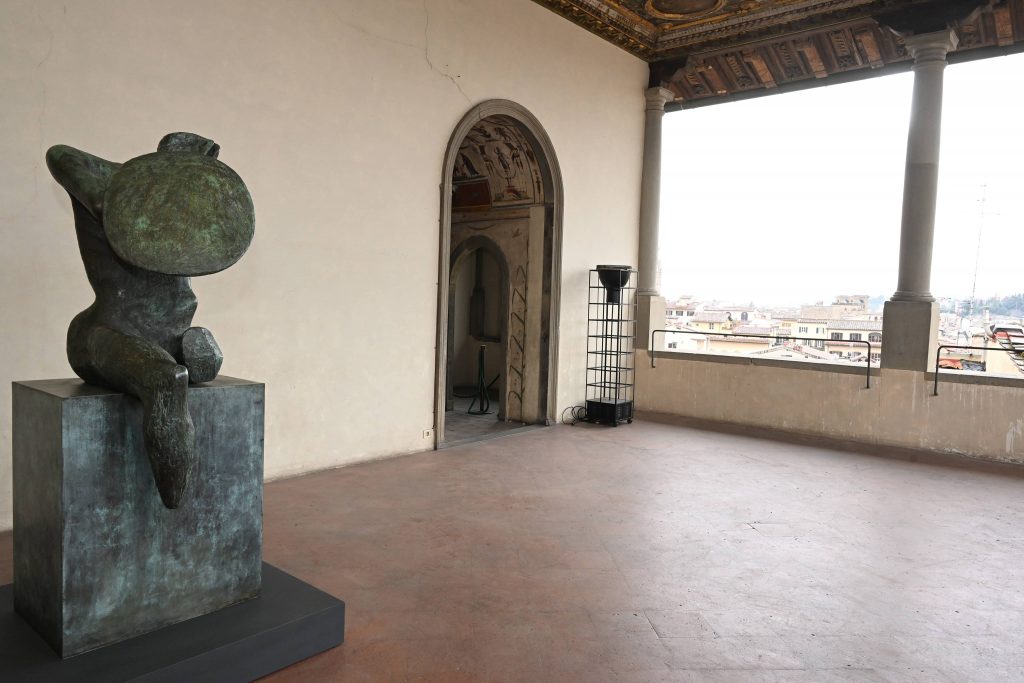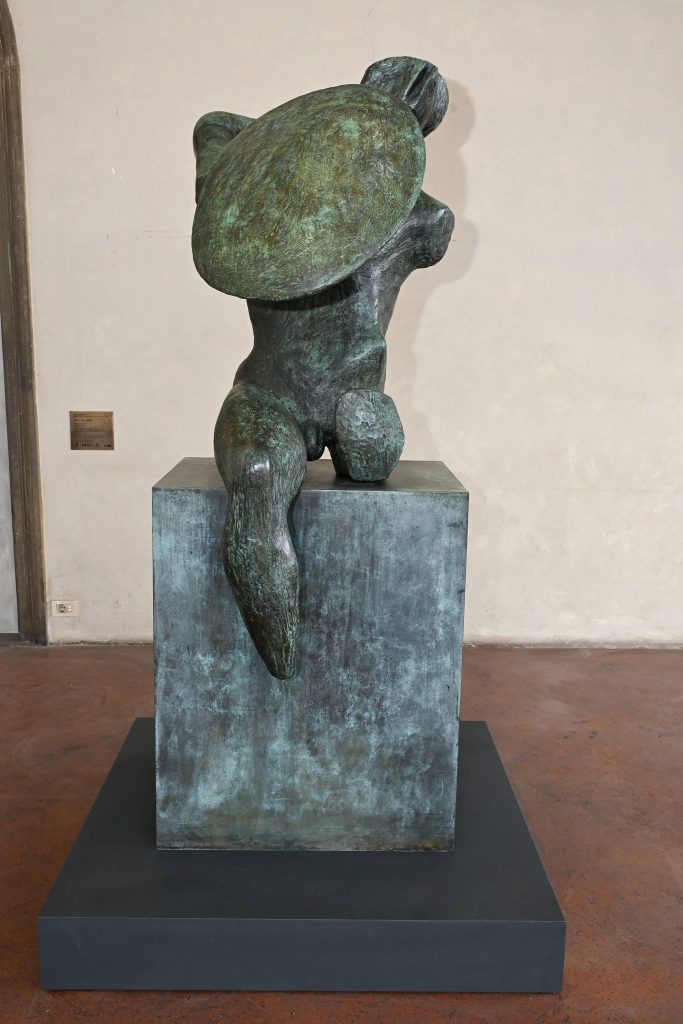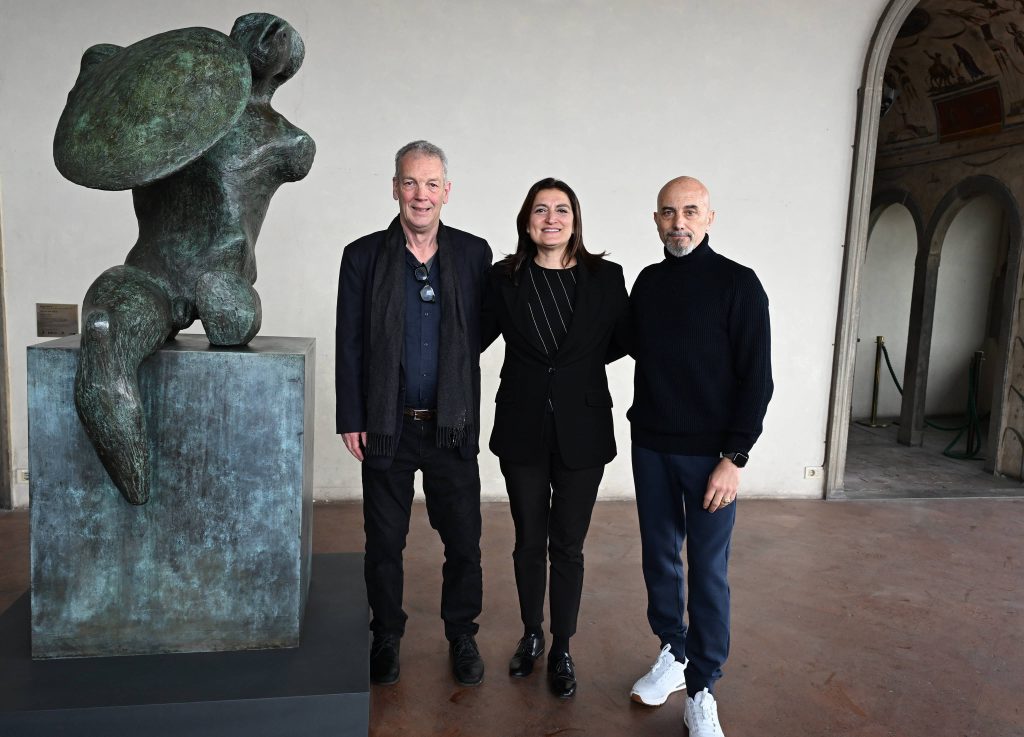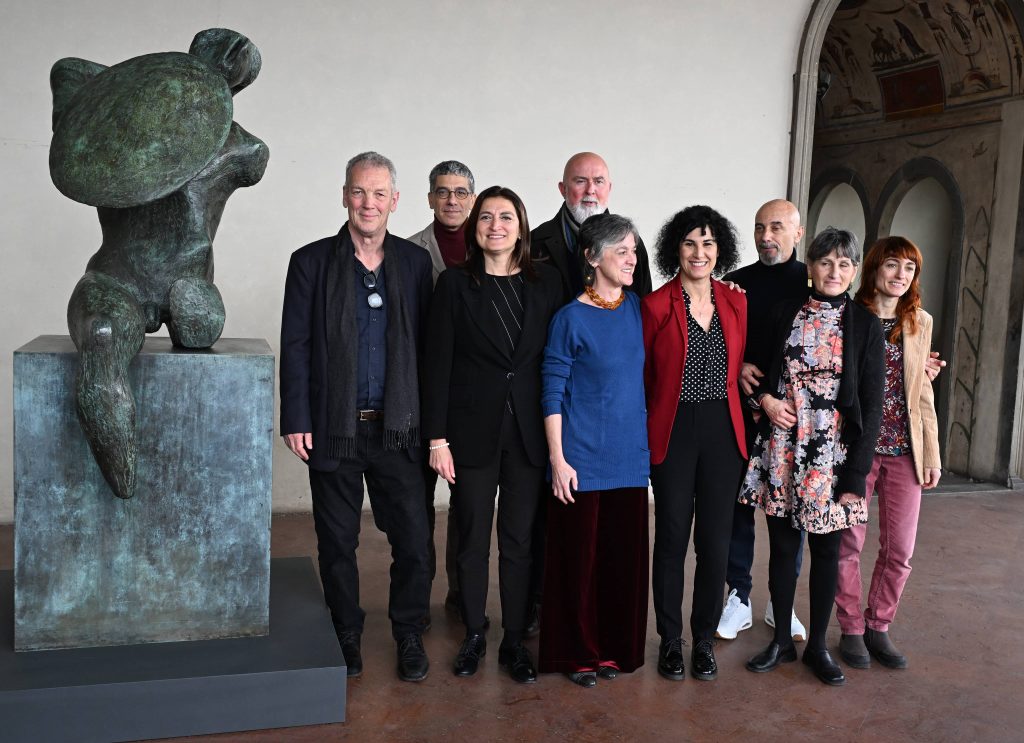Henry Moore’s Guerriero con Scudo (Warrior with Shield) is now on display at the Terrace of Saturn of Palazzo Vecchio, where the English artist originally desired the sculpture to be displayed.

Owned by The British Institute of Florence, the sculpture has seen several homes over the years, including the courtyard of the Basilica of Santa Croce before it was temporarily moved to the Sala Leone X in the Palazzo Vecchio, from May 18, 2021 to January 9, 2022. Now, following a thorough restoration by Stefania Agnoletti, Maria Baruffetti and Merj Nesi of the Opificio delle Pietre Dure, Moore’s masterpiece is benefitting from a dramatic new setting, inaugurated on February 27.

The project undertaken by Museo Novecento and curated by Sergio Risaliti follows the 50th anniversary in 2022 of the phenomenal exhibition of Moore’s monumental sculptures held at Forte di Belvedere in 1972. Following that acclaimed display, Henry Moore decided to donate a work to the city of Florence: the bronze sculpture titled Warrior with Shield, made in 1953-54. Originally intended to be placed in the Loggia di Saturno in Palazzo Vecchio, due to a series of events, it ended up being returned to England upon Moore’s request. The work was then donated to The British Institute of Florence in the 1980s by the artist’s family and finally returned to Florence.
The figure depicting a mutilated young fighter encourages us to resist in the face of battles, turning our gaze towards distant horizons, with its current location of the corner loggia that overlooks via dei Leoni and the Loggia del Grano, offering a spectacular view of Santa Croce, San Niccolò, piazzale Michelangelo, Forte di Belvedere and the hill of San Miniato, proving an apt setting.
On the occasion of the press conference, director of The British Institute of Florence, Simon Gammell, commented, “Three years ago, when the work was temporarily displayed in the Sala Leone X, it was discovered that there was a certain amount of damage that needed addressing. It then spent a year in restoration at the Opificio and it was eventually agreed that it would be displayed here indefinitely. The contemporary point of this is that it’s another example of the very deep and historic friendship between il British and Florence. Henry Moore loved this city, one of multiple Brits over the centuries. He spent a lot of time here, and that is the whole purpose of The British Institute; we’ve existed for over 107 years to take forward that deep friendship and collaboration between the fiorentini and the inglesi, so it’s a beautiful statement, and we’re delighted to have this collaboration with the Comune.”
Palazzo Vecchio can be visited from 9am to 7pm every day, except Thursday when opening hours are 9am-2pm.










